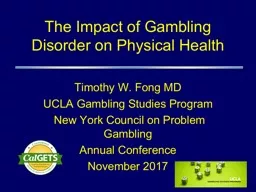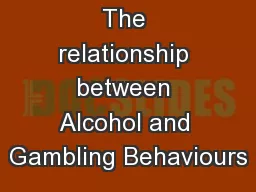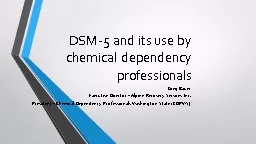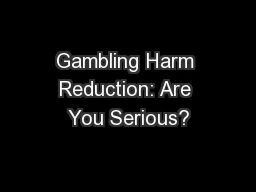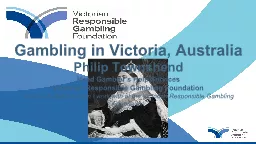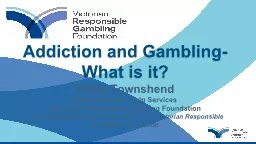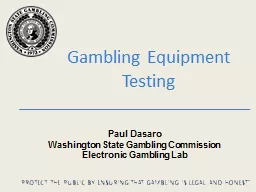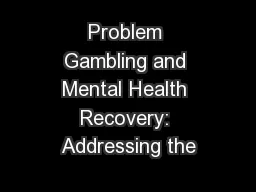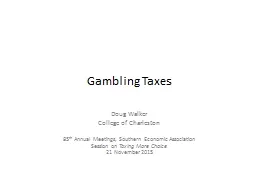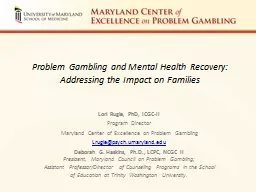PPT-The Impact of Gambling Disorder on Physical
Author : alexa-scheidler | Published Date : 2018-09-18
Health Timothy W Fong MD UCLA Gambling Studies Program New York Council on Problem Gambling Annual Conference November 2017 Financial Disclosures Speaker Bureau Research
Presentation Embed Code
Download Presentation
Download Presentation The PPT/PDF document "The Impact of Gambling Disorder on Phys..." is the property of its rightful owner. Permission is granted to download and print the materials on this website for personal, non-commercial use only, and to display it on your personal computer provided you do not modify the materials and that you retain all copyright notices contained in the materials. By downloading content from our website, you accept the terms of this agreement.
The Impact of Gambling Disorder on Physical: Transcript
Download Rules Of Document
"The Impact of Gambling Disorder on Physical"The content belongs to its owner. You may download and print it for personal use, without modification, and keep all copyright notices. By downloading, you agree to these terms.
Related Documents

